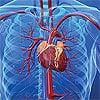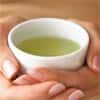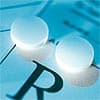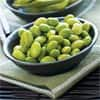
What's hot
What's hot
| News flashes are posted here frequently to keep you up-to-date with the latest advances in health and longevity. We have an unparalleled track record of breaking stories about life extension advances.
Vitamin E improves recovery of severe form of fatty liver disease in children
Columbia University professor of pediatrics Joel E. Lavine, MD, PhD and his associates assigned 173 children diagnosed with NASH to receive 400 international units of RRR-alpha-tocopherol, 500 milligrams of the diabetes drug metformin or a placebo twice per day for two years. Blood samples were analyzed for the enzyme alanine aminotransferase (ALT, which is elevated in NASH) and other factors at the beginning and end of the study, and additional values were ascertained during periodic follow-up visits. Liver biopsies were performed after 96 weeks of treatment. While neither vitamin E nor metformin performed significantly better than the placebo in their ability to achieve sustained reduction of ALT, levels improved more rapidly in those that received vitamin E, although the difference in comparison with the placebo group diminished by the end of the treatment period. Biopsy results from children who received the vitamin revealed an absence of NASH in 58 percent, compared to 41 percent of those who received metformin and 28 percent of the placebo group. "These results suggest that vitamin E improves or resolves NASH in at least half of children, which we previously showed to be true in adults," commented Stephen P. James, MD of the National Institutes of Health, which funded the study. "We hope to build on these results by looking for other therapies and reliable, noninvasive ways to monitor the disease and response to therapy." —D Dye
Review points to inflammation as link between B6 insufficiency and increased risk of cardiovascular disease
"Ample evidence substantiates the theory of atherosclerosis as an inflammatory disease, and low plasma vitamin B6 concentrations have been related to increased cardiovascular disease risk," write Valentina Lotto and Simonetta Friso of the University of Verona School of Medicine, along with Sang-Woon Choi of Tufts University. "The inverse association observed between inflammation markers and vitamin B6 supports the notion that inflammation may represent the common link between low vitamin B6 status and cardiovascular disease risk." Dr Lotto and coauthors note that low levels of pyridoxal 5'-phosphate, the major coenzyme form of vitamin B6 in plasma, have been associated with high levels of C-reactive protein, a marker of inflammation that, when elevated, is a risk factor for cardiovascular disease. Reduced levels of vitamin B6 have also been associated with a number of inflammatory diseases, which have, in turn, been associated with a greater risk of developing premature coronary artery disease, for which specific pharmaceuticals as well as vitamin B6 supplements have been proposed as preventive agents. While trials of supplementation of vitamin B6 for the prevention of recurrence of cardiovascular disease have had mixed outcomes, the authors remark that these results do not preclude the possibility of a protective effect in primary prevention. "A mild vitamin B6 deficiency characterises, in most cases, a subclinical at-risk condition in inflammatory-linked disease which should be addressed by an appropriate individually tailored nutritional preventive or therapeutic strategy," they recommend. —D Dye
Prediabetes and prehypertension associated with reduced vitamin D levels
Alok K. Gupta, MD and colleagues assessed data from 898 men and 813 women who participated in the National Health and Nutrition Examination Survey (NHANES), 2001-2006. Blood pressure measurements were obtained during examinations conducted upon enrollment, and blood samples were evaluated for glucose, serum 25-hydroxyvitamin D and other factors. Serum vitamin D levels declined with increasing age and body mass. Prediabetes, defined as having a fasting serum glucose of between 100 and 125 milligrams per deciliter, was 33 percent higher among those who had vitamin D levels of 76.3 nanomoles per liter (nmol/L) or less compared to those with higher levels, and the risk of prehypertension, defined as systolic blood pressure of 120 to 139 mmHg and/or diastolic blood pressure between 80 and 80 mmHg was 61 percent greater. When the risk of having both conditions was considered, those with low vitamin D levels 2.4 times the risk of that experienced by subjects with higher vitamin D levels. While subjects with prediabetes and prehypertension averaged vitamin D levels that were lower than participants with normal glucose and blood pressure, those with undiagnosed diabetes and untreated hypertension had even lower levels. The authors remark that it is plausible that among those who have prediabetes, prehypertension or both conditions accompanied by low serum vitamin D levels, “exogenous vitamin D supplementation and increasing the serum 25-hydroxyvitamin D concentration may reverse subtle changes in fasting serum glucose and resting blood pressure.” —D Dye
Cancer preventive lifestyle reduces death from all causes over 14 year period
Marji McCullough and her colleagues analyzed data from 111,966 nonsmoking men and women enrolled in the Cancer Prevention Study (CPS)-II Nutrition Cohort. Diet and lifestyle questionnaires completed between 1992 and 1993 were scored on a scale of zero to eight according to adherence to American Cancer Society prevention guidelines concerning body mass index, physical activity, and food and alcohol intake. Over a 14 year follow-up period, 10,369 deaths occurred among the men and 6,613 among the women. Participants with high compliance scores of seven or eight had a 42 percent lower risk of dying than those who scored between zero and two. In men with high scores, the risk of dying of cardiovascular disease was 48 percent lower than those with low scores, while for women there was a 58 percent lower risk. For cancer death, the risk associated with high compliance was 30 percent lower for men and 24 percent lower for women. Similar associates were observed for former smokers and those who had never smoked. The authors remark that few studies have evaluated the combined impact of lifestyle behaviors on cancer, cardiovascular disease and all cause mortality without including tobacco avoidance. “Because 80 percent of Americans are never or former smokers, it is important to consider the impact of other recommended behaviors,” they write. “Beyond tobacco avoidance, following other cancer prevention guidelines may substantially lower risk of premature mortality in older adults,” they conclude. —D Dye
Chinese therapies improve strength and bone health
Texas Tech University Health Sciences Center associate professor Chwan-Li Shen and her colleagues divided 171 postmenopausal women who had weak bones but had not been diagnosed with osteoporosis to receive a daily regimen of 500 milligrams green tea polyphenols, polyphenols plus a thrice-weekly tai chi regimen, a placebo plus tai chi, or a placebo alone for six months. Blood and urine samples were collected and muscle strength was assessed at the beginning of the treatment period and at three and six months. By three months, markers of bone health improved among those who received green tea polyphenols. This benefit was also observed at six months in those who participated in tai chi. Muscle strength also improved after six months among those who received either therapy. Participation in tai chi was additionally associated with improvement in mental and emotional health. When markers of oxidative stress were evaluated, both green tea and tai chi were demonstrated to have beneficial effects. This finding could help explain the positive effects observed in this study, which could be the result of a reduction in oxidative stress-induced inflammation. Dr Shen and her associates conclude that there is a "favorable effect of modest green tea consumption on bone remodeling in this pre-osteoporotic population," and anticipate a long term study involving additional measures of bone density. —D Dye
Aspirin users have lower pancreatic cancer risk
Among those who consumed aspirin on at least one day per month there was a 26 percent lower adjusted risk of being diagnosed with pancreatic cancer compared to those who did not report using aspirin. In former smokers, aspirin use was associated with a 39 percent lower risk. For participants who used low dose aspirin for the prevention of cardiovascular disease, a 35 percent reduction in risk was observed. No protective association was observed for acetaminophen or non-aspirin nonsteroidal anti-inflammatories. "This provides additional evidence that aspirin may have chemoprevention activity against pancreatic cancer," Dr Tan concluded. "The results are not meant to suggest everyone should start taking aspirin once monthly to reduce their risk of pancreatic cancer. Individuals should discuss use of aspirin with their physicians because the drug carries some side effects." —D Dye
Vitamin D supplementation could benefit overweight African-Americans
Assistant professor Ryan A. Harris, PhD, of the Georgia Prevention Institute and his colleagues divided 45 overweight African-American men and women to receive 60,000 international units (IU) of vitamin D (which equates to approximately 2,000 IU per day) or a placebo every four weeks for 16 weeks. "We could have used daily dosing, but we knew compliance would be better with monthly dosing,” Dr Harris remarked. “One dose a month is easier than taking two pills a day.” Brachial artery flow-mediated dilatation, which assesses endothelial function, was measured before and after the treatment period. Participants who received vitamin D experienced improved blood flow by the end of the trial compared to those who received a placebo. "This points to a beneficial effect of vitamin D supplementation on endothelial cell function," Dr Harris said. "If you're deficient in vitamin D and you take supplements, you have a good probability of increasing endothelial function and therefore decreasing the risk of cardiovascular disease." Although vitamin D appears to improve endothelial function, how the vitamin accomplishes this feat is yet to be defined. "Vitamin D interacts with a lot of different systems in the body," Dr Harris noted. “It may decrease inflammation, which is better for endothelial function." Dr Harris recommends additional research to evaluate vitamin D supplementation’s long term effects. —D Dye
Strawberries protect the esophagus
The current study involved 36 Chinese men and women whose esophageal lesions placed them at high risk for cancer. Participants consumed 60 grams freeze-dried strawberries daily for six months. (Freeze-drying concentrates the fruit’s protective compounds.) Biopsies of the esophagus were obtained before and after the treatment period. The research team, led by Dr Tong Chen of Ohio State University Comprehensive Cancer Center, observed a decrease in histological grade of precancerous lesions in 80.5 percent of the subjects at the end of the trial. "We concluded from this study that six months of strawberry treatment is safe and easy to consume,” stated Dr Chen, who is an assistant professor in the division of medical oncology, department of internal medicine at Ohio State. “In addition, our preliminary data suggests that strawberries decreased histological grade of precancerous lesions and reduced cancer-related molecular events." "We found that daily consumption of strawberries suppressed various biomarkers involved in esophageal carcinogenesis, including cell proliferation, inflammation and gene transcription," she explained. "We predict that the majority of patients with precancerous lesions in their esophagus will develop esophageal cancer over subsequent decades," she added. "Our study is important because it shows that strawberries may slow the progression of precancerous lesion in the esophagus. Strawberries may be an alternative, or may work together with other chemopreventive drugs, for the prevention of esophageal cancer. But, we will need to test this in randomized placebo-controlled trials in the future." —D Dye
Soy isoflavones boost radiation benefit in lung cancer patients
Wayne State University School of Medicine Department of Radiation Oncology associate professor Gilda Hillman, PhD and her associates administered a formula containing the isoflavones genistein, daidzein and glycitein to cultured human non-small cell lung cancer cells. The formula is similar to soy isoflavone supplements used in clinical studies, which have a good safety profile. Cancer cells that received the isoflavone formula prior to radiation had more DNA damage and less evidence of repair than untreated cells. The isoflavones improved the ability of radiation to kill cancerous cells by blocking DNA mechanisms that are normally activated by the cells to survive radiation damage. The current study found a greater effect for the isoflavone combination than had previously been found for genistein alone in earlier research. "To improve radiotherapy for lung cancer, we are studying the potential of natural non-toxic components of soybeans, called soy isoflavones, to augment the effect of radiation against the tumor cells and at the same time protect normal lung cells against radiation injury," Dr Hillman stated. "These natural soy isoflavones can sensitize cancer cells to the effects of radiotherapy by inhibiting the survival mechanisms that cancer cells activate to protect themselves. At the same time, soy isoflavones can also act as antioxidants, which protect normal tissues against unintended damage from the radiotherapy." —D Dye
Soy not associated with risk of recurrence in breast cancer survivors
Dr Shu, who is a professor of medicine at Vanderbilt University Medical Center, evaluated data from 18,312 women diagnosed with invasive breast cancer who were enrolled in the Shanghai Breast Cancer Survival Study, the Life After Cancer Epidemiology Study, the Women's Healthy Eating and Living Study, or the Nurses' Health Study. Dietary questionnaire responses were analyzed for soy isoflavone, tofu and soy milk intake. Breast cancer outcomes were assessed approximately nine years following the original diagnosis. Among women whose intake of soy isoflavones was highest at over 23 milligrams per day, there was a 9 percent lower risk of dying and a 15 percent lower risk of recurrence compared with those whose intake was lowest at 0.48 milligrams per day or less, however, the researchers note that the apparent protective effect might be due to chance. "There has been widespread concern about the safety of soy food for women with breast cancer," observed Dr Shu. "Soy foods contain large amounts of isoflavones that are known to bind to estrogen receptors and have both estrogen-like and antiestrogenic effects. There are concerns that isoflavones may increase the risk of cancer recurrence among breast cancer patients because they have low estrogen levels due to cancer treatment. We're particularly concerned that isoflavones may compromise the effect of tamoxifen on breast cancer treatment because both tamoxifen and isoflavones bind to estrogen receptors." "Our results indicate it may be beneficial for women to include soy food as part of a healthy diet, even if they have had breast cancer," Dr Shu concluded. —D Dye
Exercise reduces the effect of stress on telomeres
Dr Lin, who is an associate research biochemist in the laboratory of Elizabeth Blackburn, PhD, reported the results of a study of 63 postmenopausal women who were primary caregivers for a dementia patient. Thirty-six of the subjects were found in an earlier analysis to have an association between pessimism and higher levels of a marker of inflammation as well as shorter telomeres. In the most recent analysis of the group, an increase in perceived stress over a one year period was associated with a reduction in white blood cell telomere length, yet perceived stress was not related to telomere length among those who exercised. In another study reported by Dr Lin, which included 251 healthy women between the ages of 50 and 65, telomeres of women who reported childhood abuse were shorter than those of women who were not abused, however, in exercising women, the effect was not observed. "We saw a relationship between childhood trauma and short telomere length but the relationship seems to go away in people who exercise vigorously at least three times a week," Dr Lin observed. "Our findings suggest that traumatic and chronic stressful life events are associated with shortening of telomeres in cells of the immune system, but that physical activity may moderate this impact,"Dr Lin concluded. —D Dye
Repeat surveillance CT associated with increased cancer risk
Post-surgery options for older men who have undergone removal of a cancerous testicle include chemotherapy, surgical excision of the retroperitoneal lymph nodes, or active surveillance, which involves receiving 13 to 15 CT scans over a five year period. For the current study, University of California Davis urology resident Karim Chamie and colleagues evaluated data from 7,301 participants the Surveillance, Epidemiology and End Results Program who had undergone removal of a testicle due to a nonseminomatous germ cell tumor between 1988 and 2006. The researchers observed a greater amount of secondary cancers occurring over a 15 year period in men over the age of 45 with stage 1 cancer who opted for active surveillance compared to those who underwent lymph node surgery. Analysis of the data indicated that 306 secondary malignancies would occur among 10,000 patients undergoing active surveillance, versus 233 without surveillance. "The side effect is worse than the disease," Dr Chamie remarked. "More men are likely to get secondary malignancies than are liable to die from their active disease." "What has happened is that because CT images are so diagnostically useful, physicians request them for their patients in great numbers, so the concerns are really based upon the fact that 80 million CT scans are performed every year in the U.S.," coauthor John Boone commented. "That is a huge number." “This is the first study that I am aware of that shows that diagnostic CT scans cause cancer with statistical significance," Dr Boone announced. "The organizations that recommend these protocols need to reevaluate this aggressive use of CT and maybe opt for MRI or ultrasound." —D Dye
|

 An article appearing in the April 27, 2011 issue of the
An article appearing in the April 27, 2011 issue of the  An article published online on April 13, 2011 in the
An article published online on April 13, 2011 in the  In the March, 2011 issue of the journal
In the March, 2011 issue of the journal  An article published online on April 5, 2011
An article published online on April 5, 2011  The results of a clinical trial revealed on April 10, 2011 at the Experimental Biology meeting held in Washington, DC suggest that green tea polyphenols as well as a traditional Chinese form of exercise known as tai chi could help maintain bone health and muscle strength in older women, while reducing inflammation and oxidative stress.
The results of a clinical trial revealed on April 10, 2011 at the Experimental Biology meeting held in Washington, DC suggest that green tea polyphenols as well as a traditional Chinese form of exercise known as tai chi could help maintain bone health and muscle strength in older women, while reducing inflammation and oxidative stress. The American Association for Cancer Research’s 102nd Annual Meeting, held April 2 to 6, 2011 in Orlando, was the site of a presentation by Xiang-Lin Tan, PhD, MD of the Mayo Clinic concerning a protective effect for aspirin use against
The American Association for Cancer Research’s 102nd Annual Meeting, held April 2 to 6, 2011 in Orlando, was the site of a presentation by Xiang-Lin Tan, PhD, MD of the Mayo Clinic concerning a protective effect for aspirin use against  A presentation at the Experimental Biology 2011 meeting held April 9 to 13, 2011 in Washington, DC reveals the conclusion of researchers at Georgia Health Sciences University in Augusta that vitamin D supplementation could particularly benefit overweight African-American adults, who have an increased risk of
A presentation at the Experimental Biology 2011 meeting held April 9 to 13, 2011 in Washington, DC reveals the conclusion of researchers at Georgia Health Sciences University in Augusta that vitamin D supplementation could particularly benefit overweight African-American adults, who have an increased risk of  Research results presented on April 6, 2011 at the American Association for Cancer Research’s 102nd meeting held in Orlando reveal a protective effect for strawberries against the progression of precancerous esophageal lesions. Cancer of the esophagus is the sixth most frequent cause of cancer death worldwide and is expected to be diagnosed in 16,000 US residents this year.
Research results presented on April 6, 2011 at the American Association for Cancer Research’s 102nd meeting held in Orlando reveal a protective effect for strawberries against the progression of precancerous esophageal lesions. Cancer of the esophagus is the sixth most frequent cause of cancer death worldwide and is expected to be diagnosed in 16,000 US residents this year.  In an article published in the April, 2001 issue of the
In an article published in the April, 2001 issue of the  The American Association of Cancer Research’s 102nd Annual Meeting, held April 2 to 6, 2011, was the site of a presentation by Xiao Ou Shu, MD, PhD who reported a lack of an association between soy consumption and an increase in the risk of death or cancer recurrence in women who had been previously diagnosed with
The American Association of Cancer Research’s 102nd Annual Meeting, held April 2 to 6, 2011, was the site of a presentation by Xiao Ou Shu, MD, PhD who reported a lack of an association between soy consumption and an increase in the risk of death or cancer recurrence in women who had been previously diagnosed with  On April 4, 2011 at the American Association for Cancer Research’s 102nd Annual Meeting, Jue Lin, PhD of the University of California, San Francisco presented the finding of a blunting effect for exercise on the reduction in telomere length that is associated with psychological stress. Telomeres are protective caps on the ends of chromosomes that shorten with age which can serve as an indicator of health. Recent research points to stress as one factor in accelerated telomere shortening.
On April 4, 2011 at the American Association for Cancer Research’s 102nd Annual Meeting, Jue Lin, PhD of the University of California, San Francisco presented the finding of a blunting effect for exercise on the reduction in telomere length that is associated with psychological stress. Telomeres are protective caps on the ends of chromosomes that shorten with age which can serve as an indicator of health. Recent research points to stress as one factor in accelerated telomere shortening. The results of a study published online on March 15, 2011 in the journal
The results of a study published online on March 15, 2011 in the journal